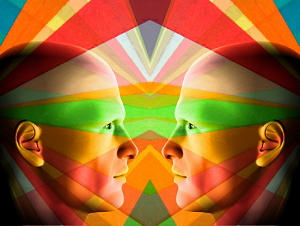ATD Blog
How Color Can Affect Learning
Tue Apr 28 2015
Bookmark

Close your eyes and think about your favorite shirt or dress. What colors do you see? Close your eyes again and picture your training room or e-learning template. What colors are you using? How are you using them? Do you intentionally choose some colors over others because of their affect on the brain, or is the decision made by default to match the other rooms in the office, or the colors in the corporate logo?
Color Is Processed in Multiple Parts of the Brain
Scientists thought they had identified this region decades ago, when they were able to pinpoint the color processing region in the brains of monkeys. They logically concluded that the human brain processes color in the same way as our nearest living relatives. However, neuroscientists at Harvard medical school used functional magnetic resonance imaging (fMRI) to identify a region adjacent to, but distinctly different from, the color center in the monkey brain. They came to this conclusion by measuring the blood flow to various parts of the brain while subjects viewed colored and black and white images.
Even more remarkable than the location of the color center is what our brains are doing with this information. From the color center, information travels simultaneously to areas of the brain that are responsible for detecting motion, shapes, edges, and transitions. This happens even with subjects who are color blind. They may not be able to recognize different colors, but their brain still knows how to use this information to gain a more nuanced view of the world.
This parallel use of color in multiple regions of the brain suggests that our response to color is far more significant than what we have previously supposed—so I write this post knowing that much more information is needed on the subject. But let’s think about what we think we know today and how it might help us build more effective, more memorable training and education materials.
Color Aids Pattern Recognition
In 2002, researchers discovered that subjects performed five to 10 percent better on standardized pattern recognition tests when they were administered in color rather black and white. The effect also boosted memory over time. The advantage of using color was only demonstrated when the color was “realistic.” When the objects were depicted in random colors, it appeared to have no effect on memory or pattern recognition.
This result suggests that our ability to discern color is linked to our ability to survive in the natural environment. Think about all the different colors of green you would have to recognize if you lived in a jungle. Each shade might indicate food, shelter or danger.
Brain Fills in the Color on Black and White Images of Known Objects
Another group of scientists discovered that when we look at photos of objects that are known to us, our brain fills in the expected color, even though it isn’t there. We still see, for example, that the image of the banana is black and white, but our brain accesses our complete memory of bananas, including the fact that they are usually yellow. If you have a need for learners to recognize specific colors, such as alert lamps on a dashboard for example, you may not need to show them in color every time after you have established the “realistic” color of each lamp.
Color May Stimulate Specific Brain Functions
A number of studies on the apparent influence of color on brain performance have some tantalizing results. It is important that remember that these results are derived from observing human subjects under different conditions using color stimuli. These studies did not use an fMRI to watch the brain in action. If you are aware of similar research involving live images of the brain, please let me know. Still, there are some intriguing results:
Blue appears to stimulate creativity and can help you achieve a state of calm relaxation. In excess, it may encourage feelings of depression.
Red stimulates the adrenal glands and can generate feelings of energy or threat, depending on the intensity of the stimulus. However, when used in conjunction with repetitive or detail-oriented tasks, red also appears to improve focus and performance.
Yellow in small amounts can make us feel happy. However, if overdone it can lead to feelings of stress, which may be why it is so often used as the color for warning messages.
Green appears to be relaxing and may even contribute to physical health, suggesting its use in hospitals.
Pink also has a calming influence and has been shown to reduce heart rate.
Purple gets our attention and may stimulate sexual attraction.
Orange stimulates critical thinking and memory. It is sometimes suggested that test centers should be painted orange to stimulate performance on exams. Bring along some snacks, though, because it also increases appetite.
What Color Is Your Training?
While we’ve been exploring man’s response to color for a long time, we are only now beginning to identify the neural pathways and brain connections involved in processing and responding to color. While we watch for more information to come out, we can at least begin to experiment with different colors to support different learning results and see where we come out. Maybe I’ll be writing about your color discovery one of these days.
Check out similar articles: Just How Much Practice Do Complex Skills Need?
More from ATD
